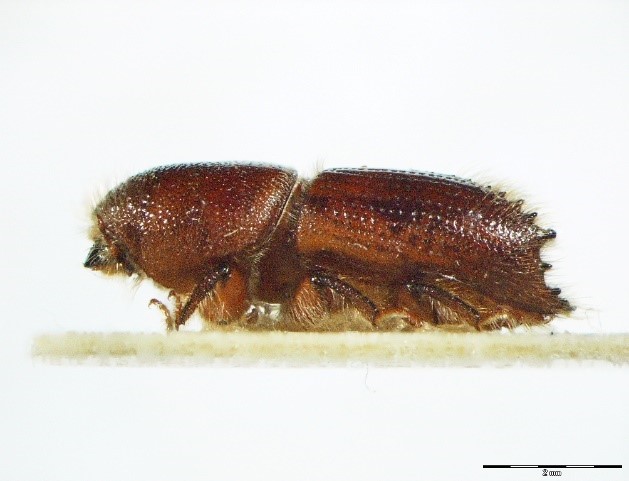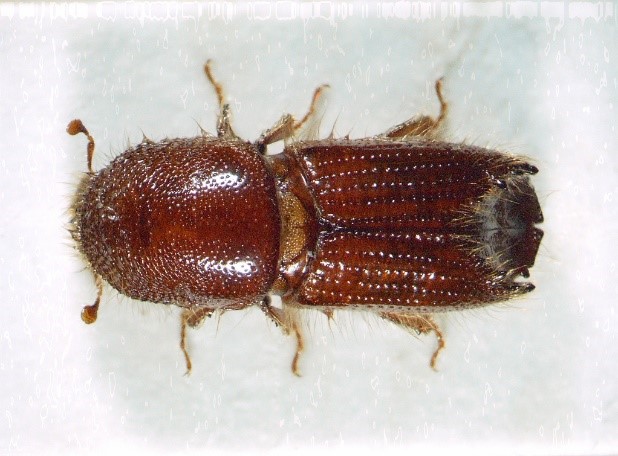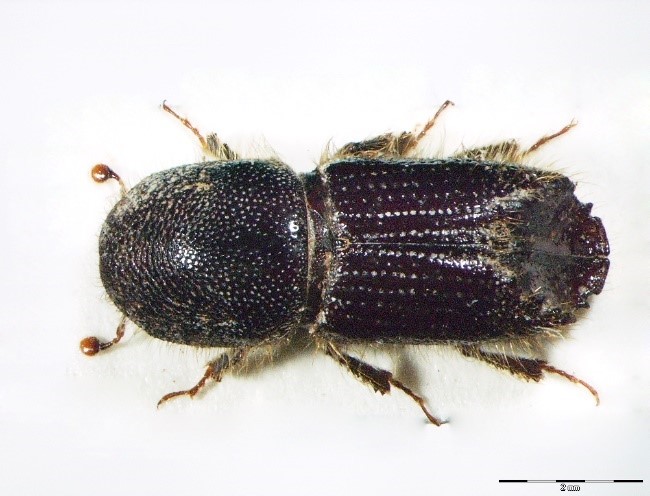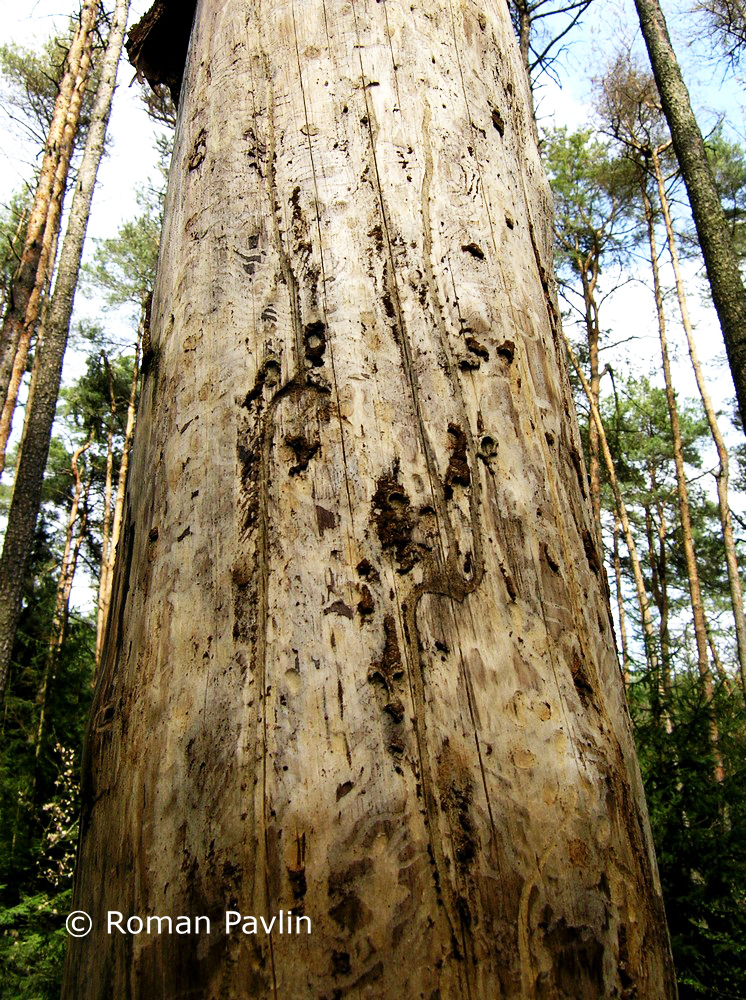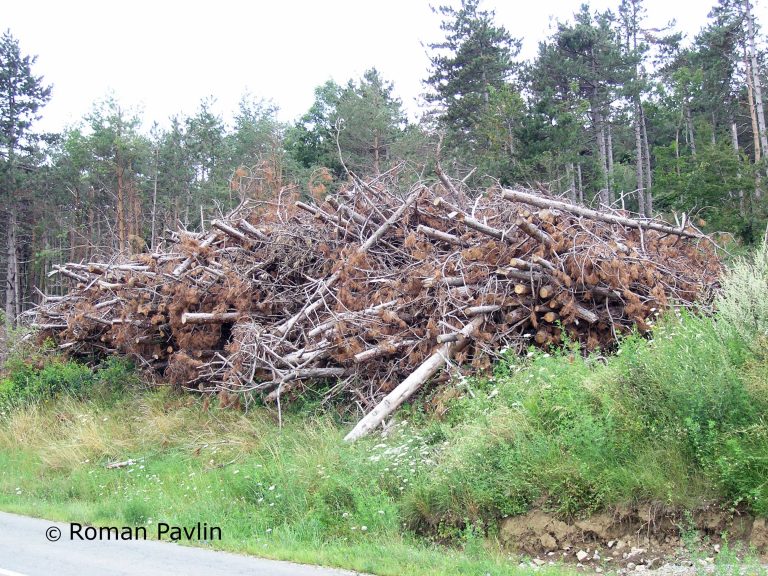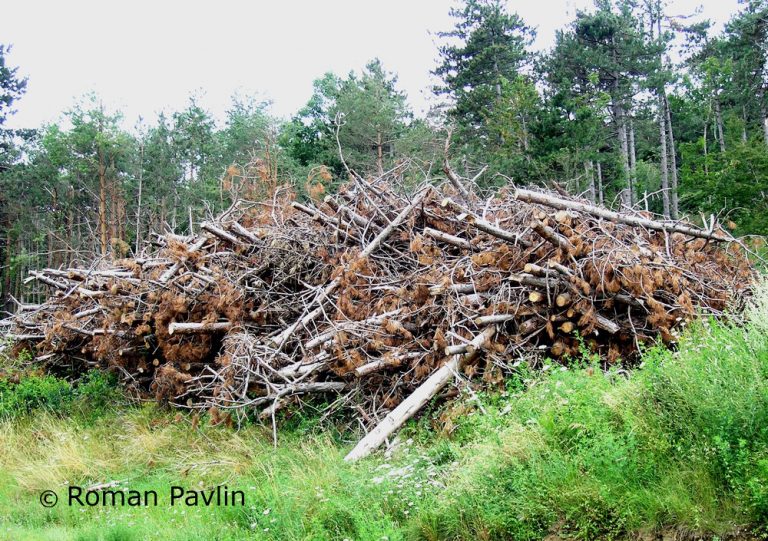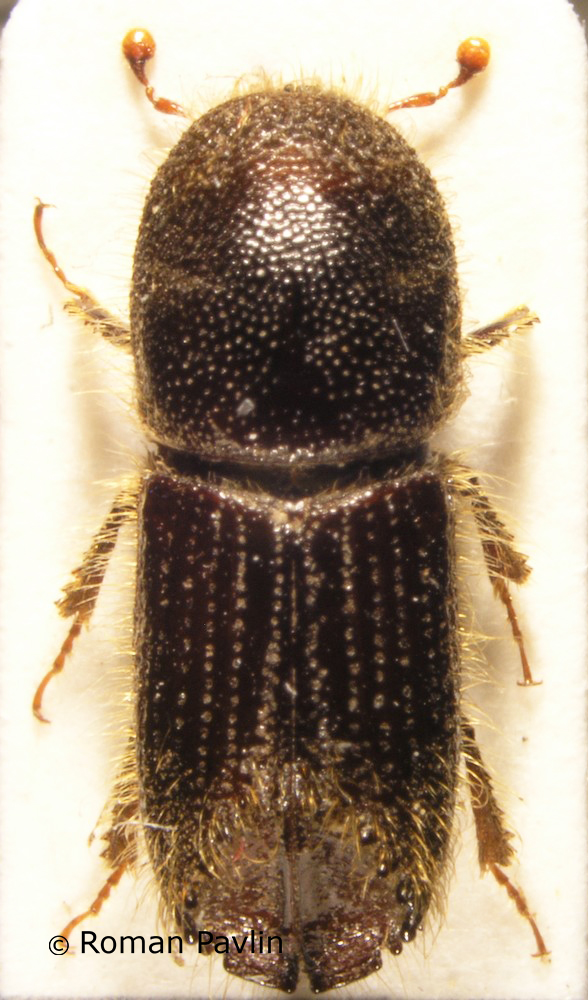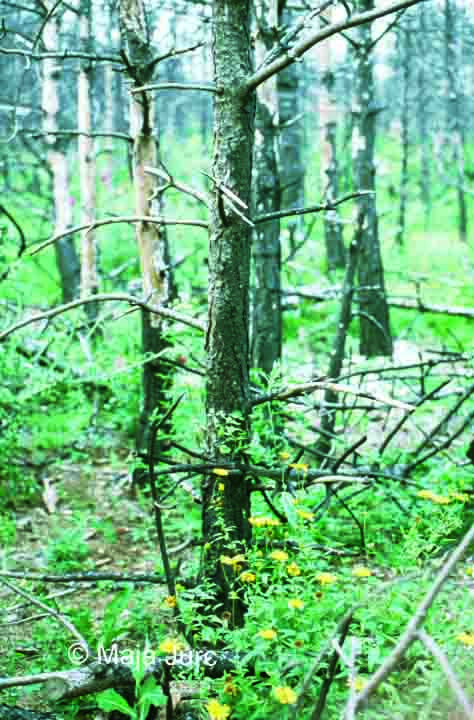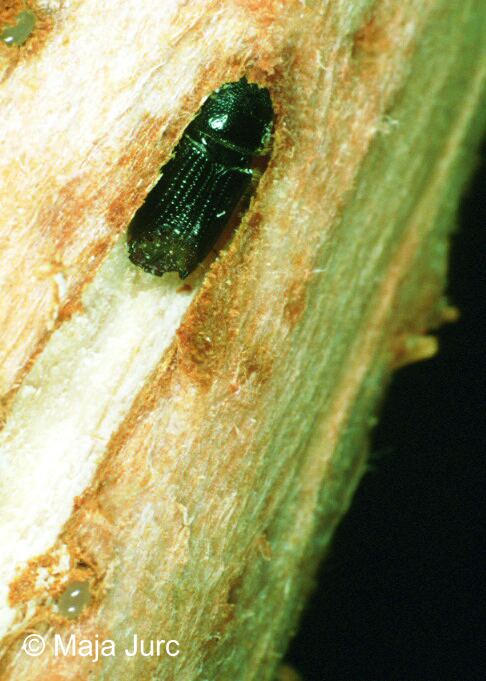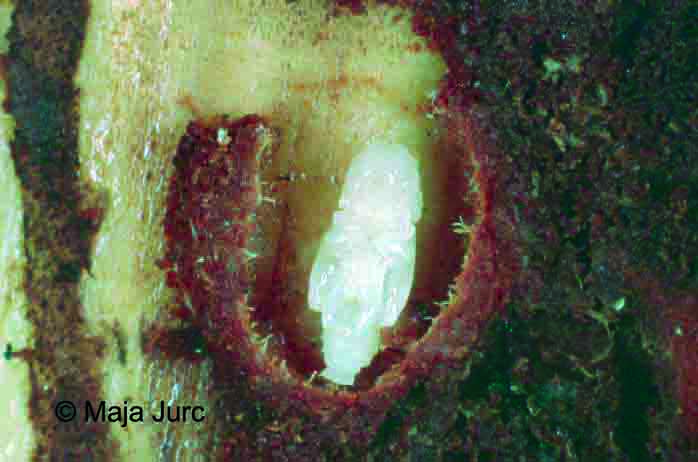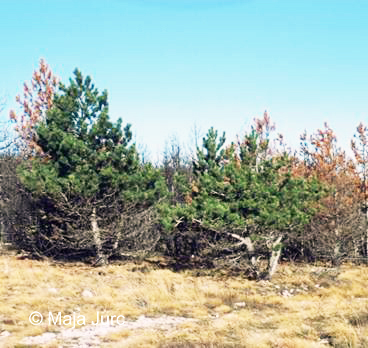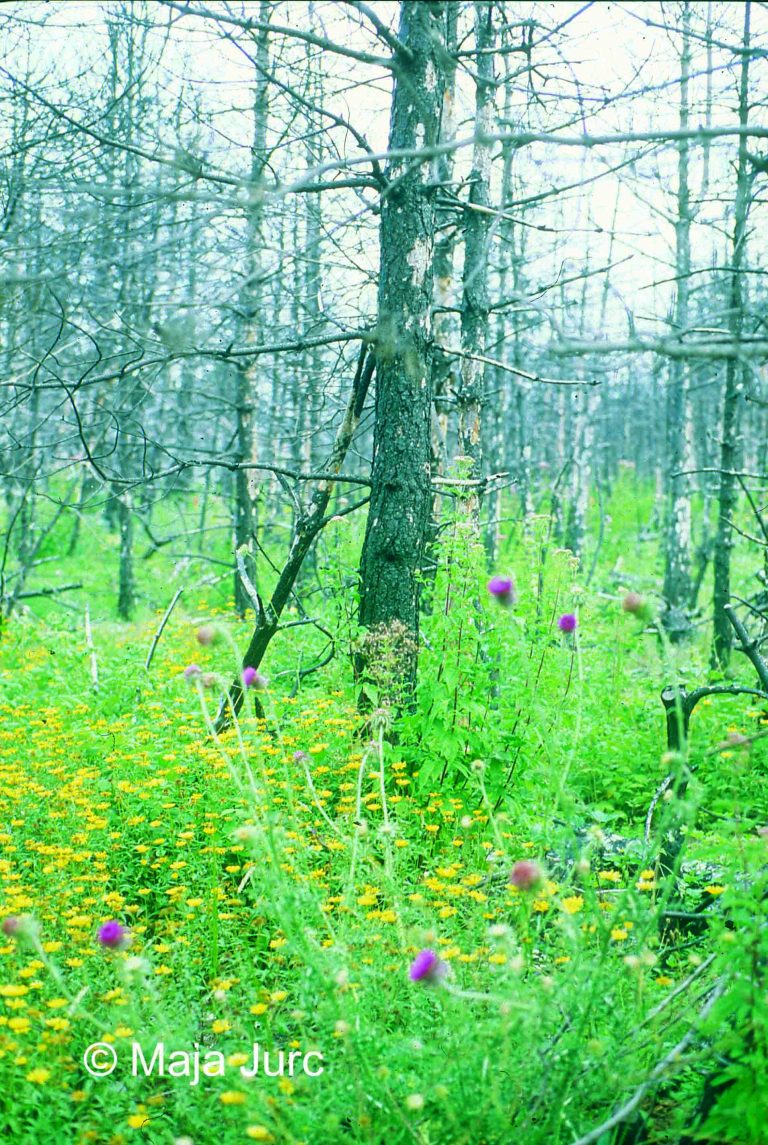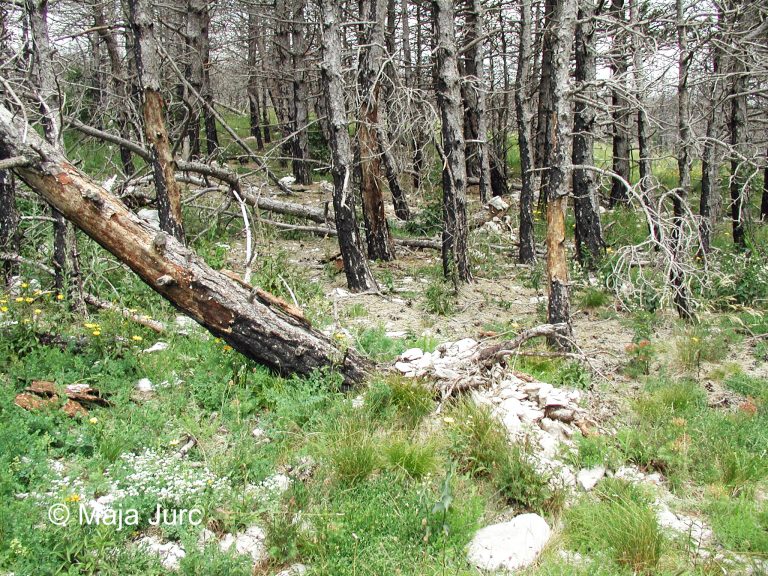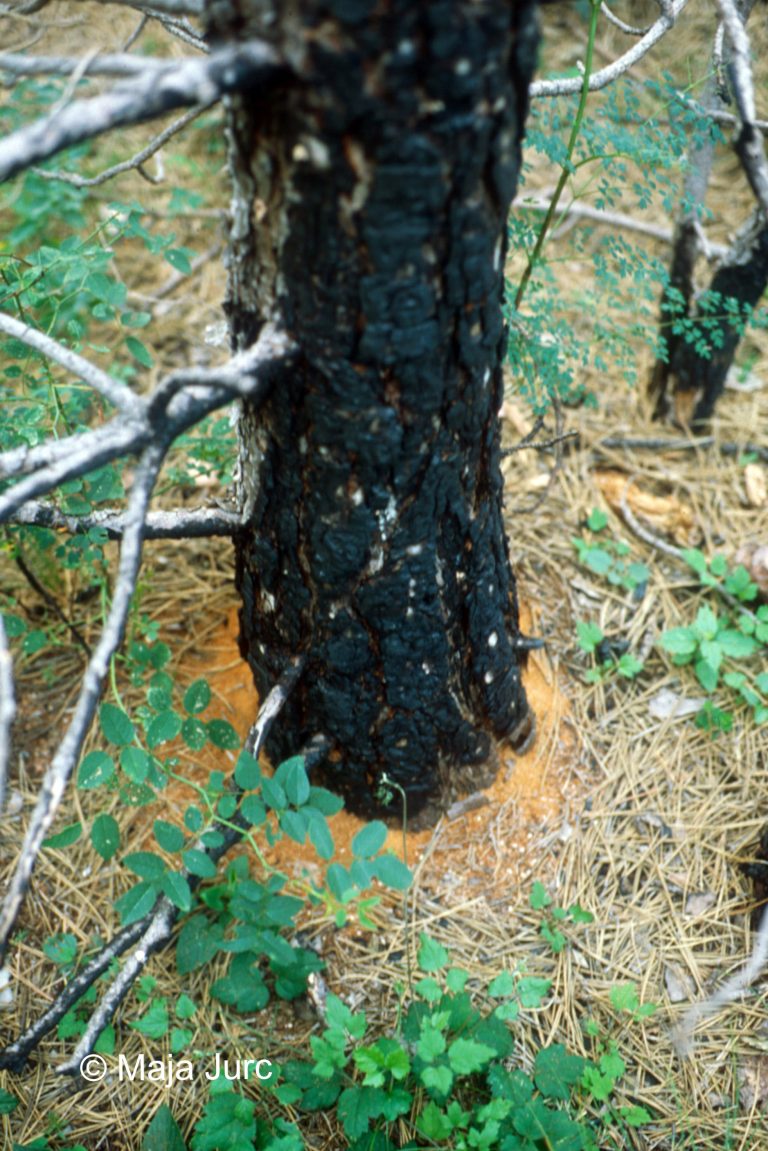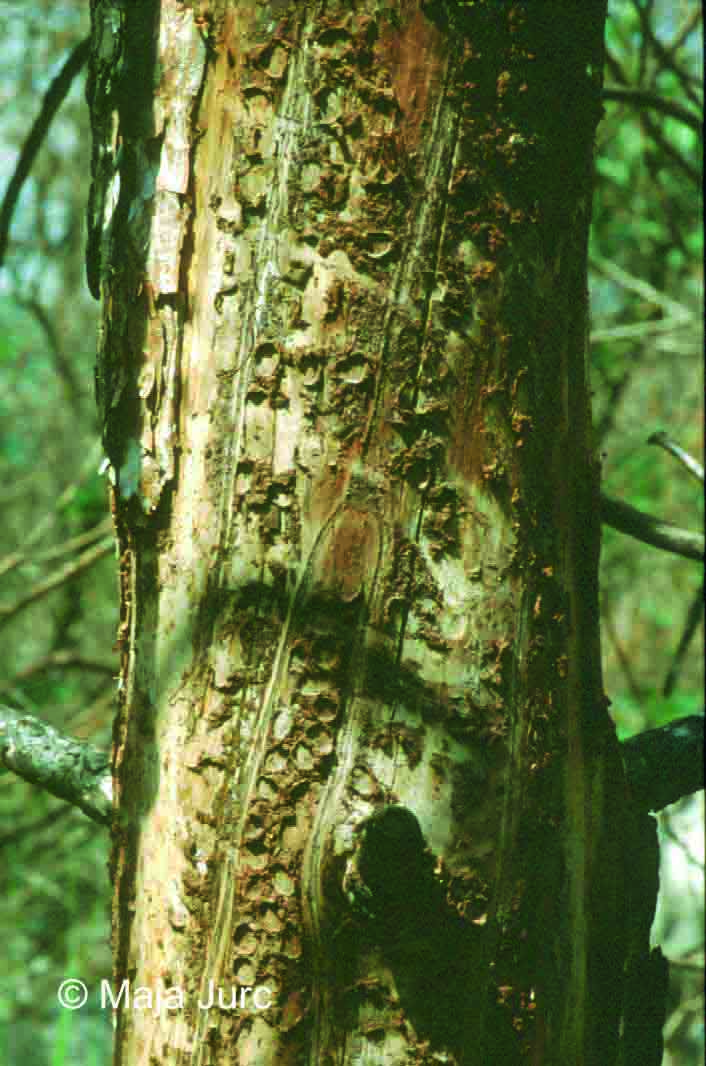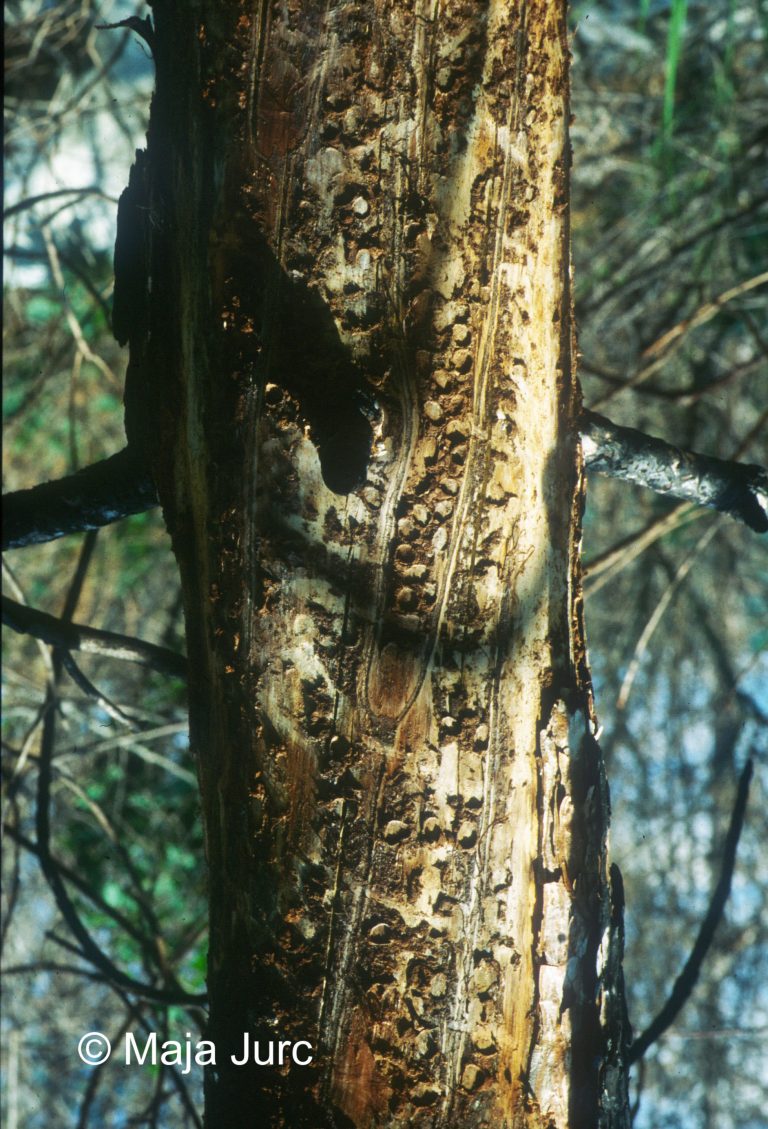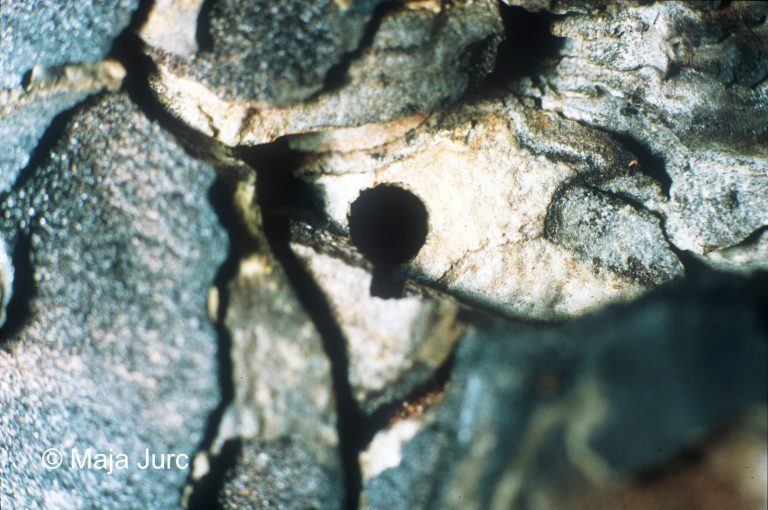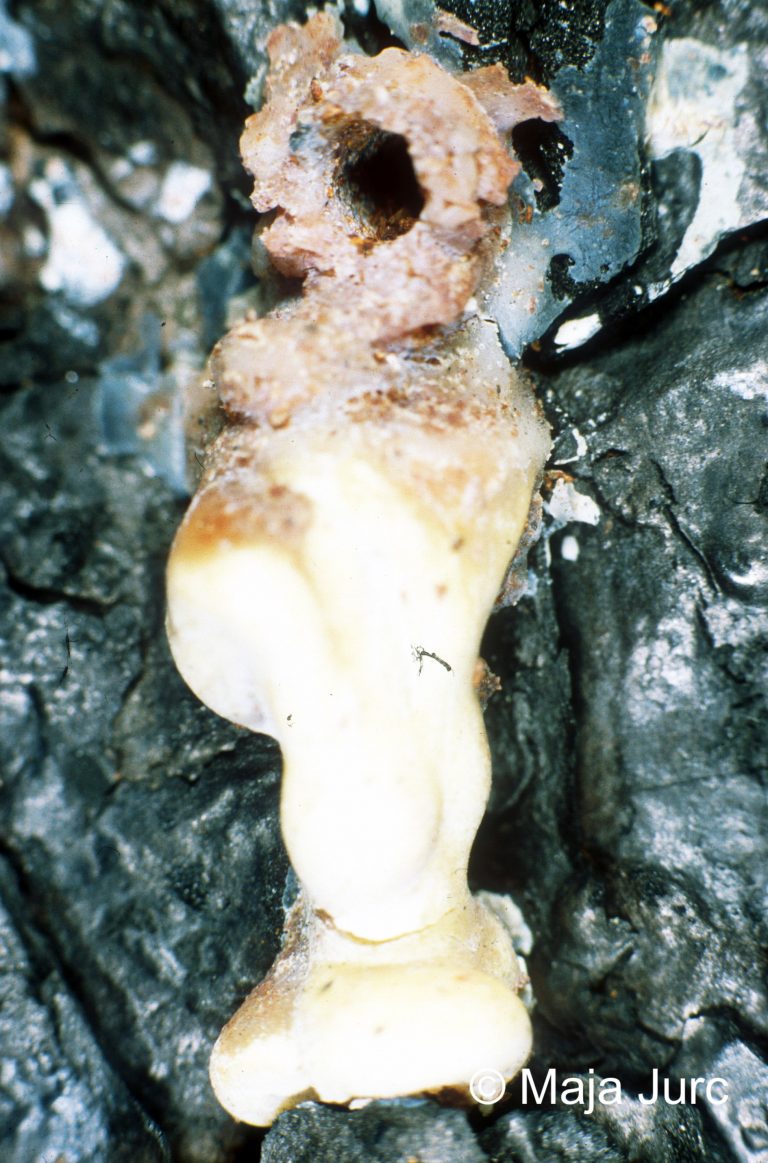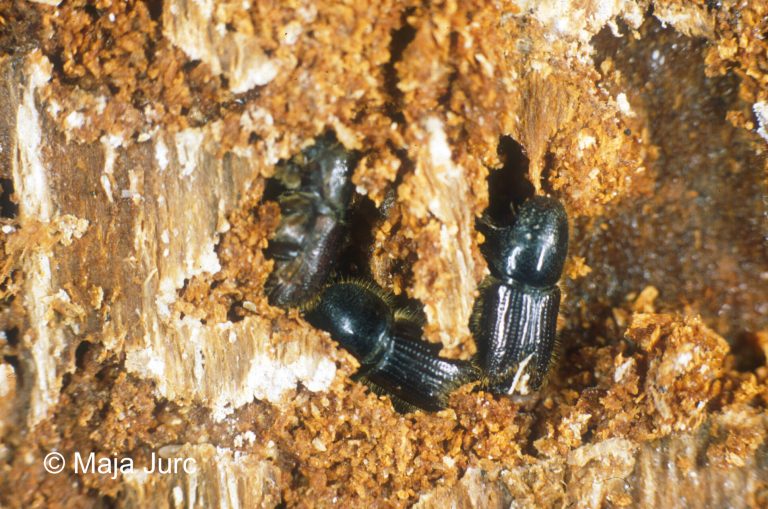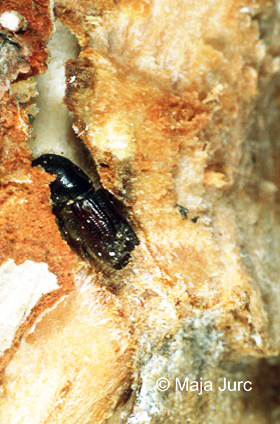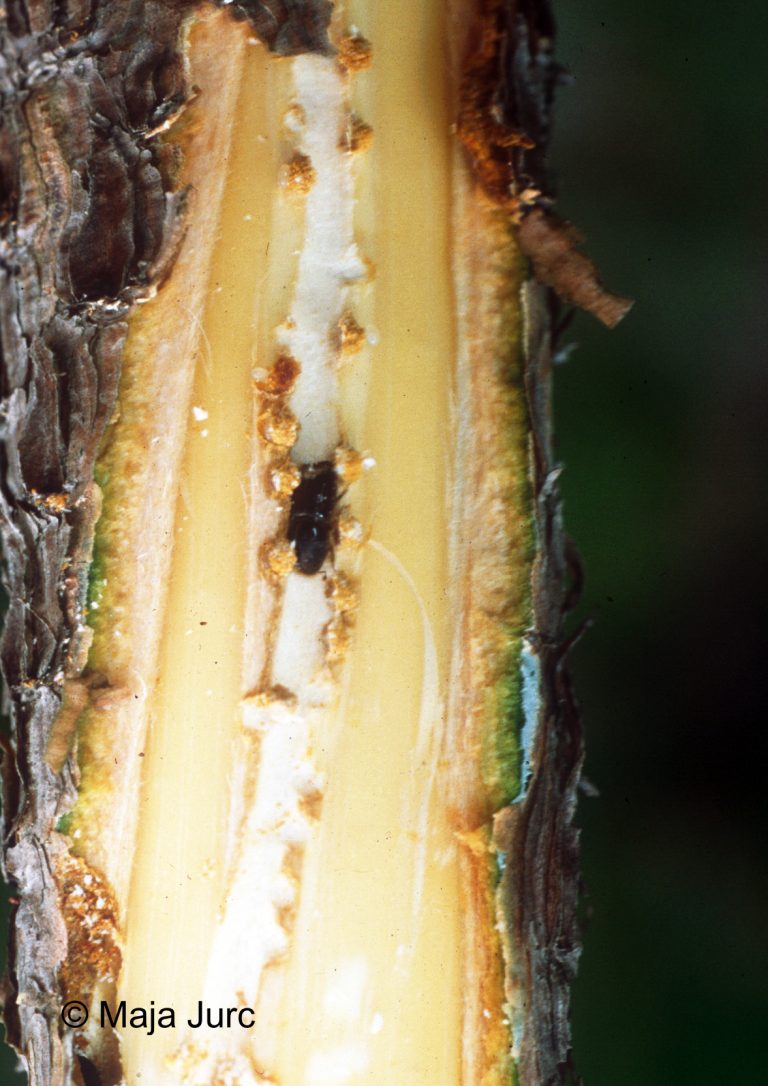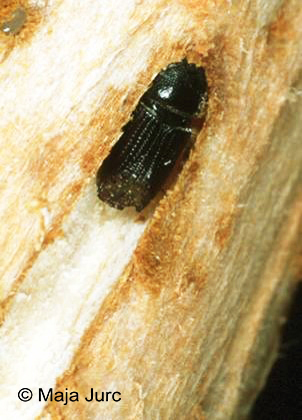28.05. Ips sexdentatus (Boerner, 1766)
Presence
E: AU BE BH BU BY CR CT CZ DE EN FI FR GB GE GR HU IT LA LT LU MC MD NL NR NT PL PT RO SK SL SP ST SV SZ UK YU
A: ES FE GAN HEB HEI HEN HUB JA JIL KZ LIA MG NC NMO SC SCH SHA SHX TR WS YUN
ORR
Figure 119: Ips sexdentatus (above: male – lateral, dorsal, below: female – dorsal) (Photo: Maja Jurc)
Older catalogs and keys – citations of name
Siegel 1866: Bostrychus stenographus Dft.; Grüne 1979: Ips sexdentatus (Boerner, 1767); Freude, Harde, Lohse 1981: Ips sexdentatus Boerner; Titovšek 1988: Ips sexdentatus (Boerner); Pfeffer & Knížek 1993: I. sexdentatus (Börner, 1776); Pfeffer 1995: I. sexdentatus (Börner, 1776).
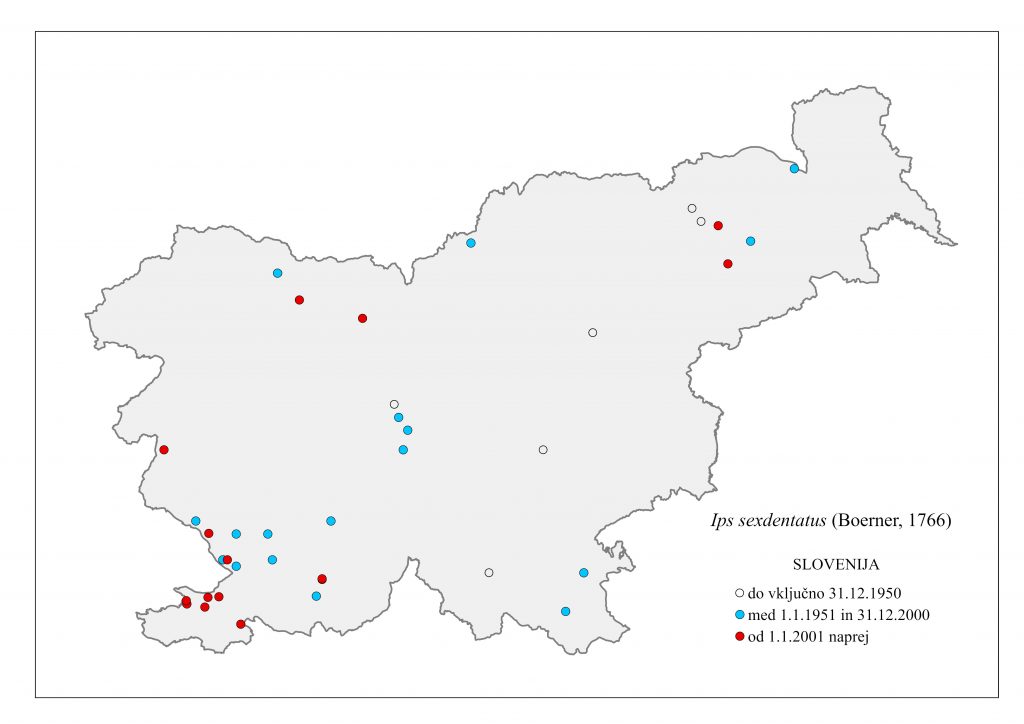
Figure 120: Ips sexdentatus, distribution map according to historical and recent data
Ecology and presence in Slovenia
The species is widespread in Europe, the Crimea, the Caucasus, Asia Minor, Siberia, Korea, Japan and northern China. Siegel (1866) states that the species is “not rare in Carniola, under pine bark”. I. sexdentatus occurs in most of Slovenia, but population densities are low (Figure 120). Hosts: Pinus sylvestris, less frequently P. pinaster, P. nigra, P. heldreichii and P. koraiensis, rarely also Abies alba, A. nordmanniana, Larix decidua, L. sibirica, Picea abies and P. orientalis. In Slovenia, the most common host is the black pine (P. nigra). It swarms from April to May and from July to August, developing 2-5 generations annually. Floemophagous, builds very long star-shaped tunnel systems with 2-5 maternal galleries. A distinctly secondary-tertiary species, mostly found on infested logs. Adult length is 5.5-8.9 mm. Both sexes have 6 denticles on the margin of each elytrum, the fourth being the largest and button-shaped (Figure 119). Pheromones: Ipsdienol, (Ipsenol) (Vité et al. 1974; Vité 1978, Bakke & Hughes 1974).

